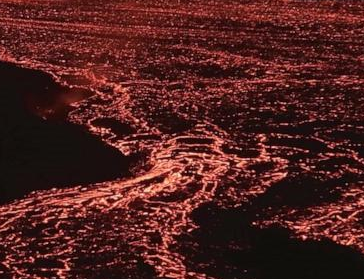Iceland’s Reykjanes Peninsula Sees Sixth Volcanic Eruption Since December

A volcano in southwestern Iceland is erupting once again, marking the sixth eruption since December. This time, a new fissure has opened on the Reykjanes Peninsula, spewing lava and sending plumes of ash into the sky. The ongoing volcanic activity has captivated both scientists and onlookers, drawn by the dramatic displays of nature’s power.
The Reykjanes Peninsula, known for its geothermal activity, has become a hotspot of volcanic eruptions over the past several months. The latest eruption began with the opening of a fresh fissure, allowing molten lava to flow across the rugged landscape. This latest development adds to the series of eruptions that have transformed the peninsula, creating new landforms and reshaping the region’s geography.
Authorities have closely monitored the situation, ensuring that residents and visitors stay safe. While the eruptions have not posed an immediate threat to populated areas, the constant activity has led to concerns about air quality and the potential for more significant eruptions in the future. The volcanic gases released during the eruptions can be harmful, prompting officials to issue warnings and advise caution in affected areas.
Scientists are particularly interested in the Reykjanes Peninsula’s ongoing eruptions, as they provide a unique opportunity to study volcanic activity in real-time. The frequent eruptions have offered insights into the mechanics of volcanic systems and the movement of magma beneath the Earth’s surface. Researchers are using this data to better understand how and when such eruptions might occur, potentially improving predictive models.
For now, the Reykjanes Peninsula remains a dynamic and evolving landscape, with the latest eruption adding to its fiery legacy. As lava continues to flow from the new fissure, the world watches in awe at the raw and unpredictable power of Iceland’s volcanoes.





